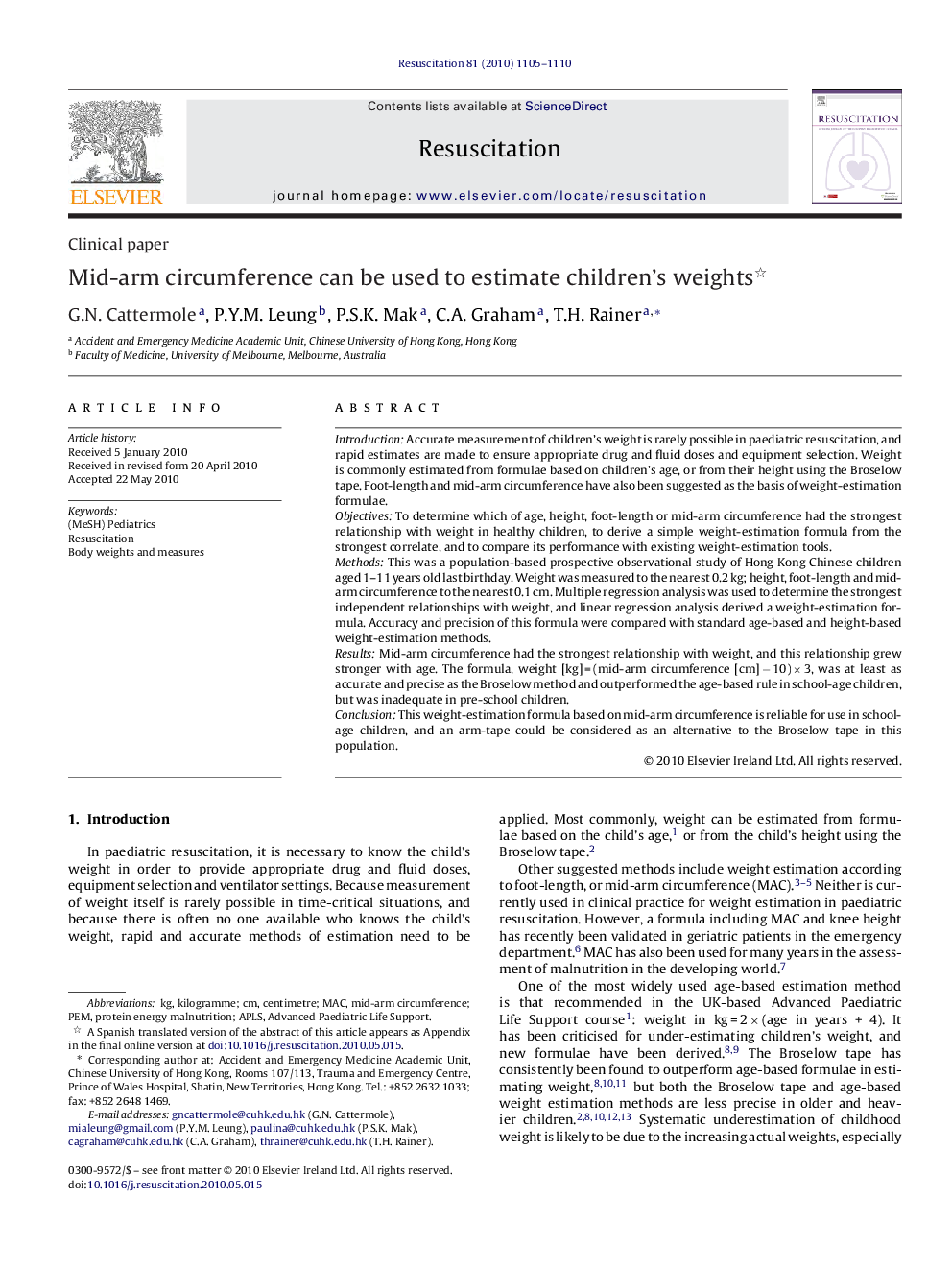| Article ID | Journal | Published Year | Pages | File Type |
|---|---|---|---|---|
| 3009301 | Resuscitation | 2010 | 6 Pages |
IntroductionAccurate measurement of children's weight is rarely possible in paediatric resuscitation, and rapid estimates are made to ensure appropriate drug and fluid doses and equipment selection. Weight is commonly estimated from formulae based on children's age, or from their height using the Broselow tape. Foot-length and mid-arm circumference have also been suggested as the basis of weight-estimation formulae.ObjectivesTo determine which of age, height, foot-length or mid-arm circumference had the strongest relationship with weight in healthy children, to derive a simple weight-estimation formula from the strongest correlate, and to compare its performance with existing weight-estimation tools.MethodsThis was a population-based prospective observational study of Hong Kong Chinese children aged 1–11 years old last birthday. Weight was measured to the nearest 0.2 kg; height, foot-length and mid-arm circumference to the nearest 0.1 cm. Multiple regression analysis was used to determine the strongest independent relationships with weight, and linear regression analysis derived a weight-estimation formula. Accuracy and precision of this formula were compared with standard age-based and height-based weight-estimation methods.ResultsMid-arm circumference had the strongest relationship with weight, and this relationship grew stronger with age. The formula, weight [kg] = (mid-arm circumference [cm] − 10) × 3, was at least as accurate and precise as the Broselow method and outperformed the age-based rule in school-age children, but was inadequate in pre-school children.ConclusionThis weight-estimation formula based on mid-arm circumference is reliable for use in school-age children, and an arm-tape could be considered as an alternative to the Broselow tape in this population.
